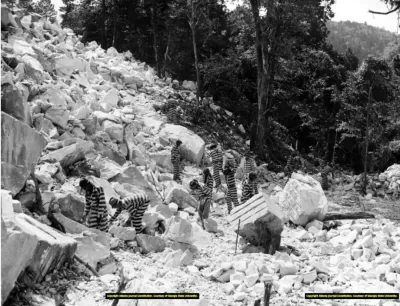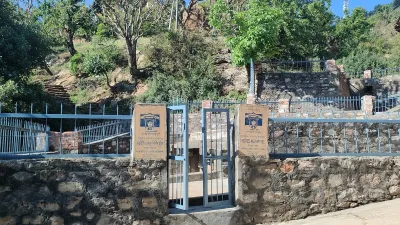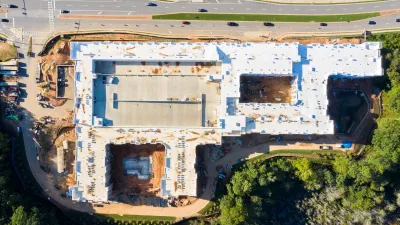Two monuments coming to Atlanta reckon with the city's history of using incarcerated laborers.

The history of Atlanta is set in brick.
It began after the Civil War, when slavery gave way to another form of labor: convict leasing. Black people, many of them children, were arrested for such “crimes” as talking loudly in the company of a white woman or not stepping off the sidewalk when a white person approached. Private companies would then lease these incarcerated people for unpaid labor in inhumane conditions.
“It’s one of those pieces of history that nobody really knows about,” says Donna Stephens, an environmental activist in Atlanta. “There’s so many people that I’ve spoken to that are just in shock about that part of American history. [To them] it’s as if slavery ended and [Martin Luther King Jr.] showed up.”
One of the outfits that profited off convict labor was the Chattahoochee Brick Company in Atlanta. For 30 years, workers there made 200,000 bricks a day—the very bricks that built the city during a formative period. These bricks are throughout downtown and in older buildings and sidewalks, says Douglas A. Blackmon, author of a Pulitzer Prize-winning book on convict leasing. The workers, 30% of whom were children, were whipped, fed rotting food and warehoused in substandard housing. Some were worked to death.
Years later, Atlanta is beginning to reckon with its history of convict labor and the role it has played in not only the city but throughout the South. Plans exist to memorialize the former site of Chattahoochee Brick and at the recently opened Westside Park a few miles away.
Atlanta will be the first city to acknowledge convict labor on a large scale.
FULL STORY: Atlanta Reckons with the Convict Labor that Built the City

Alabama: Trump Terminates Settlements for Black Communities Harmed By Raw Sewage
Trump deemed the landmark civil rights agreement “illegal DEI and environmental justice policy.”

Planetizen Federal Action Tracker
A weekly monitor of how Trump’s orders and actions are impacting planners and planning in America.

The 120 Year Old Tiny Home Villages That Sheltered San Francisco’s Earthquake Refugees
More than a century ago, San Francisco mobilized to house thousands of residents displaced by the 1906 earthquake. Could their strategy offer a model for the present?

In Both Crashes and Crime, Public Transportation is Far Safer than Driving
Contrary to popular assumptions, public transportation has far lower crash and crime rates than automobile travel. For safer communities, improve and encourage transit travel.

Report: Zoning Reforms Should Complement Nashville’s Ambitious Transit Plan
Without reform, restrictive zoning codes will limit the impact of the city’s planned transit expansion and could exclude some of the residents who depend on transit the most.

Judge Orders Release of Frozen IRA, IIJA Funding
The decision is a victory for environmental groups who charged that freezing funds for critical infrastructure and disaster response programs caused “real and irreparable harm” to communities.
Urban Design for Planners 1: Software Tools
This six-course series explores essential urban design concepts using open source software and equips planners with the tools they need to participate fully in the urban design process.
Planning for Universal Design
Learn the tools for implementing Universal Design in planning regulations.
Clanton & Associates, Inc.
Jessamine County Fiscal Court
Institute for Housing and Urban Development Studies (IHS)
City of Grandview
Harvard GSD Executive Education
Toledo-Lucas County Plan Commissions
Salt Lake City
NYU Wagner Graduate School of Public Service





























